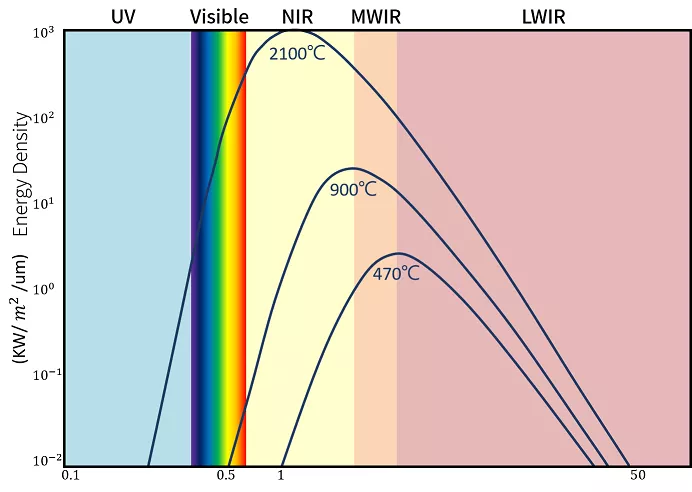Rubasse team used to post the article, “17 key points to Consider Before Purchasing your First Coffee roaster”, on PTT, a Taiwanese forum, to widely collect feedbacks and suggestions and further to refine the Rubasse official website column(Traditional Chinese).
We sincerely welcome all roasters and coffee lovers to have in-depth discussions with us. Any technical exchange of roasting facilitates the thriving development of the coffee roast market in Taiwan. Thanks again for providing us with invaluable feedback and suggestions.
Below are the replies to the netizens’ queries about the application of the near-infrared technology on the coffee roaster:
m******c: Suggest: FIR is relative long wave, penetrating through the beans better. But objects have three modes to absorb the radiant heat, including penetration, reflection, and absorption. So the “far infrared” what you say is absorbed by which part? And what percent of far infrared penetrates? Absorbes what? The lignocellulosic? Or the water? Or other organic matter? It concerns about the things which been heated. For your references.
(Cut out from PTT Forum)
First of all, the heating technology that Rubasse Infrared Digital Roaster applies is “Near Infrared (NIR)”.


(Source: https://nutritionalbalancing.org/center/htma/supportive/articles/sauna)
There are also some findings of the depth of penetration of FIR and NIR can be referred. Below is the content cited from Wavelength-Dependent Penetration Depth of Near-Infrared Radiation into Cartilage (M.V. Padalkara and N. Pleshkoa, 2016).
It was found that the depth of penetration varied from ∼1 mm to 2 mm in the 4000–5100 cm−1 range, ∼3 mm in the 5100–7000 cm−1 range, and ∼5 mm in the 7000–9000 cm−1 frequency range. These findings suggest that the best NIR region to evaluate cartilage with no subchondral bone contribution is in the range of 4000–7000 cm−1.
It is mentioned that ∼5 mm in the 7000–9000 cm−1 frequency range which means the strongest frequency range of penetration to 0.5cm locates in 1/9000cm=1100nm~1/7000=1400nm and it is exactly where the short-wave infrared reaches.
For FIR, it was found that the penetration is within 1um. Therefore, it is crucial to choose the appropriate IR wavelength for the application of roasting. Also, it is worth mentioning that no matter what wavelength the infrared is, it is unable to penetrate the iron pot!
What are the Roasters Eager to Know?
The penetration depth of short-wave infrared energy into common food is discussed in several studies.
(Photo from Infrared Heating for Food and Agricultural Processing)
You can find the book from:
https://www.amazon.com/Infrared-Agricultural-Processing-Contemporary-Engineering/dp/1420090976
Founder’s Words
l******0: Teacher Xiaodou is so professional and the sales have to train more XD
m******c: @l******0 I didn't spite them. I just doubted about the “far infrared bean roasting”.
m******c: There is a term called “Rapid Thermal Process” in the semiconductor industry. They use far infrared to heat the wafer. But that is because that wafer has special construction to for absorbing, so how about coffee beans?(Cut out from PTT)
From the experience when the founder was in the PhD programme of Physics at the University of Taiwan, some RTA equipment (the RTP process machinery you mentioned) are directly irradiated with “short-wavelength” infrared lamps and even so are the vacuum exposure ( Process requirements), or direct laser and vacuum exposure, etc. The far infrared machinery are NEVER used!
It is presumed that the FIR’s feature of poor penetration.
Besides, according to Stefan-Boltzmann law of blackbody radiation theory, if the infrared lamps of the same volume size with different wavelengths, there will be a distinct difference in energy density.
To put it briefly, at the same power, the length of long-wavelength “far-infrared tube” made by infrared lamp manufacturers will be far longer than short-wavelength “short-wave infrared tube”.
By careful comparison, the “short-wave infrared tube” with high energy density and outstanding penetration will be your cleverest choice.
Where There is Temperature, There is IR!
According to Stefan-Boltzmann law, when an object radiates infrared (even electromagnetic wave), the total energy (also known as the black-body radiant emittance or radiation flux density) radiated per unit surface area of a black body is directly proportional to the fourth power of the black bodys’ thermodynamic temperature.
Simply speaking, the temperature of any substance from absolute temperature 0 °K to 6000 °K (about the colour temperature of the sun) actually will radiate electromagnetic waves. The main emission peak will be from microwave, far infrared, to short-wave infrared, and even also visible light. When the energy density is 6000 °K, although the main peak is visible light, it still emits a lot of infrared rays, and when it is close to 2000 °K, the main emission is short-wave infrared rays.


If the lamp with the same length or surface area, the power of “short-wave infrared lamps” can be emitted by a hundred times or even thousands of times higher than that of “far-infrared emitting device”.
Therefore, no matter for heating the drum or the beans, the so-called FIR roasters have energy limit.

(Source: http://coxcamera.com/technology/infrared-thermography/)
Also, if contrast the colour temperature observed by unaided eye with the corresponding colour temperature chart, you will find out what the main light is.
When the filament temperature is only 800 degrees, the lamp colour will be dark red. At this time, the main emission is 3.5um infrared; when the filament temperature reaches 2000K, the lamp will have a yellowish colour temperature, and the emitted infrared wavelength is short-wave infrared. Just like the yellowish colour you will see if you look into Rubasse roaster.


(Source: Wikimedia Commons)


